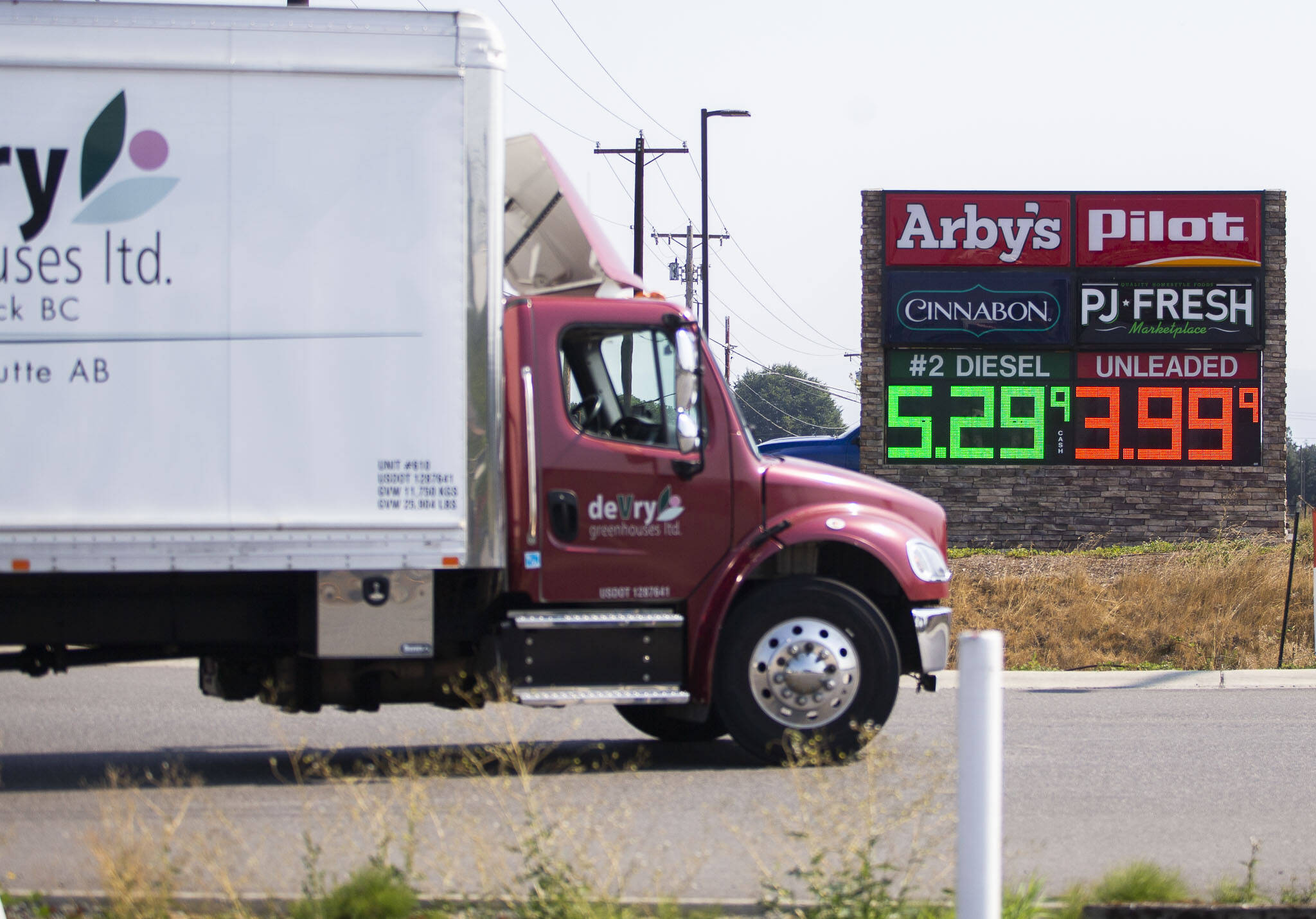EVERETT — Diesel affects nearly everything in the economy. Farmers need it to fill up tractors and transport animals. Truckers need it to haul goods across the country.
The businesses that rely on diesel fuel are hurting amid record-high prices.
Fortunately, both gasoline and diesel prices have come down since early July, bringing some relief to drivers, data from the U.S. Energy Information Administration shows. Since mid-August, however, diesel costs have started to rise again. Prices jumped by about 20 cents between Aug. 22 and 29.
As of Tuesday, the statewide average for diesel was about $5.58 a gallon, down from a record high in June of $6.47, according to AAA. That’s still about 49% higher than last year.
Snohomish-area sheep farmer Darrell Dockter canceled an annual trip to a livestock show in Louisville, Kentucky, due to high diesel prices. He estimates it would have cost him double to haul his animals there. He has also cut back on showing at fairs.
The trip cancellations will mean lost revenue for the farmer.
Soaring energy costs have fueled other types of inflation, such as a spike in hay prices. Dockter said it costs him more to truck over the hay he buys from Eastern Washington.
“It’s really making it tough to survive in the world of agriculture,” he said.
In mid-August, Dockter noticed a 35-cent increase for diesel at a truck stop in Arlington. With prices going up again, he sees “no relief in sight.”
High fuel costs have also squeezed the trucking industry.
For Lake Stevens-based trucker Shawn Dirksen, it used to cost between $400 to $500 a day to fill up his truck. The price has jumped to as high as $1,000, he said.
The trucking company Dirksen works for pays for his fuel. However, independent truckers must foot the bill themselves. Dirksen said shipping rates haven’t necessarily increased to help drivers recover their costs.
“Your profit margin is a lot lower now,” he said, adding he knows truck drivers considering leaving the industry due to the challenges.
Many trucking companies can pass higher costs along to customers, said Sheri Call, president and CEO of the Washington Trucking Associations. Ultimately, higher shipping costs mean higher prices for consumers, she said.
Call said it’s still a good time to consider a career in the trucking industry. She said it takes about four to six weeks to complete a CDL training program, and truck driver pay has increased 20% to 30% amid an ongoing driver shortage.
Jacqueline Allison: 425-339-3434; jacqueline.allison@heraldnet.com; Twitter: @jacq_allison.
Talk to us
> Give us your news tips.
> Send us a letter to the editor.
> More Herald contact information.

























